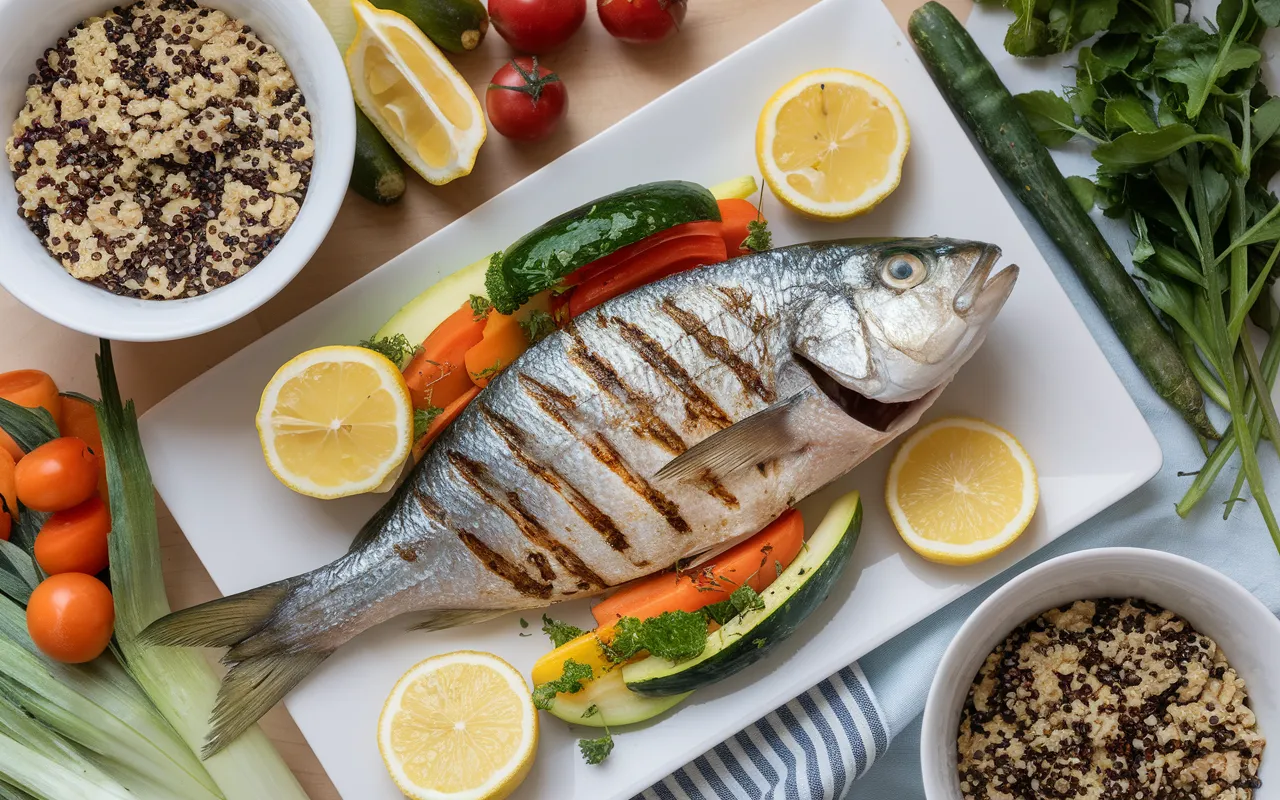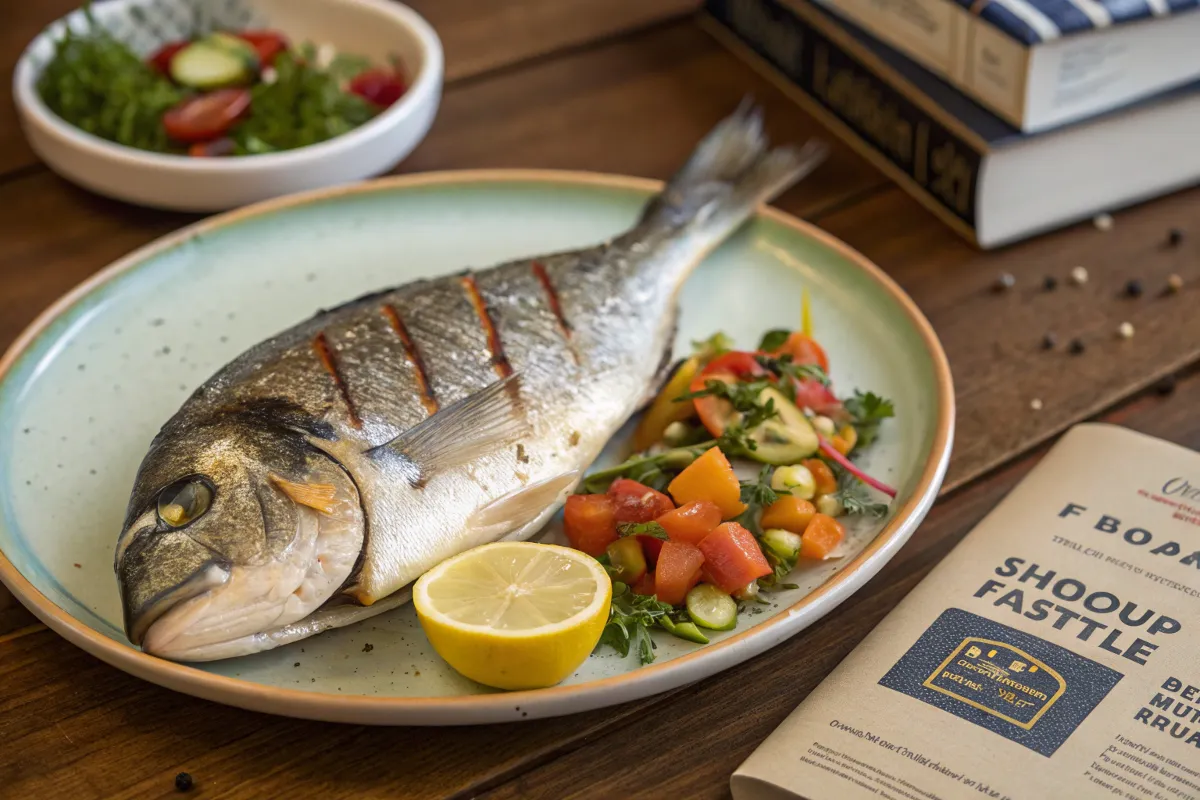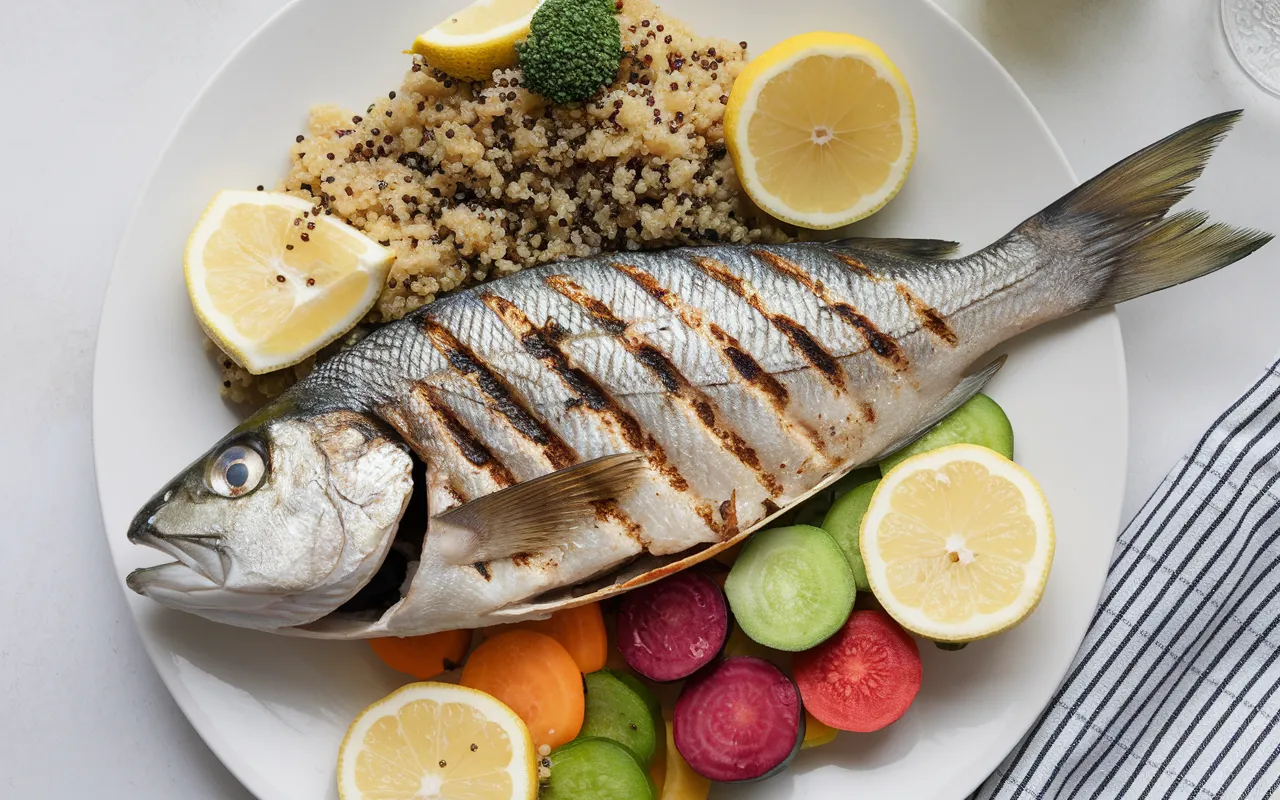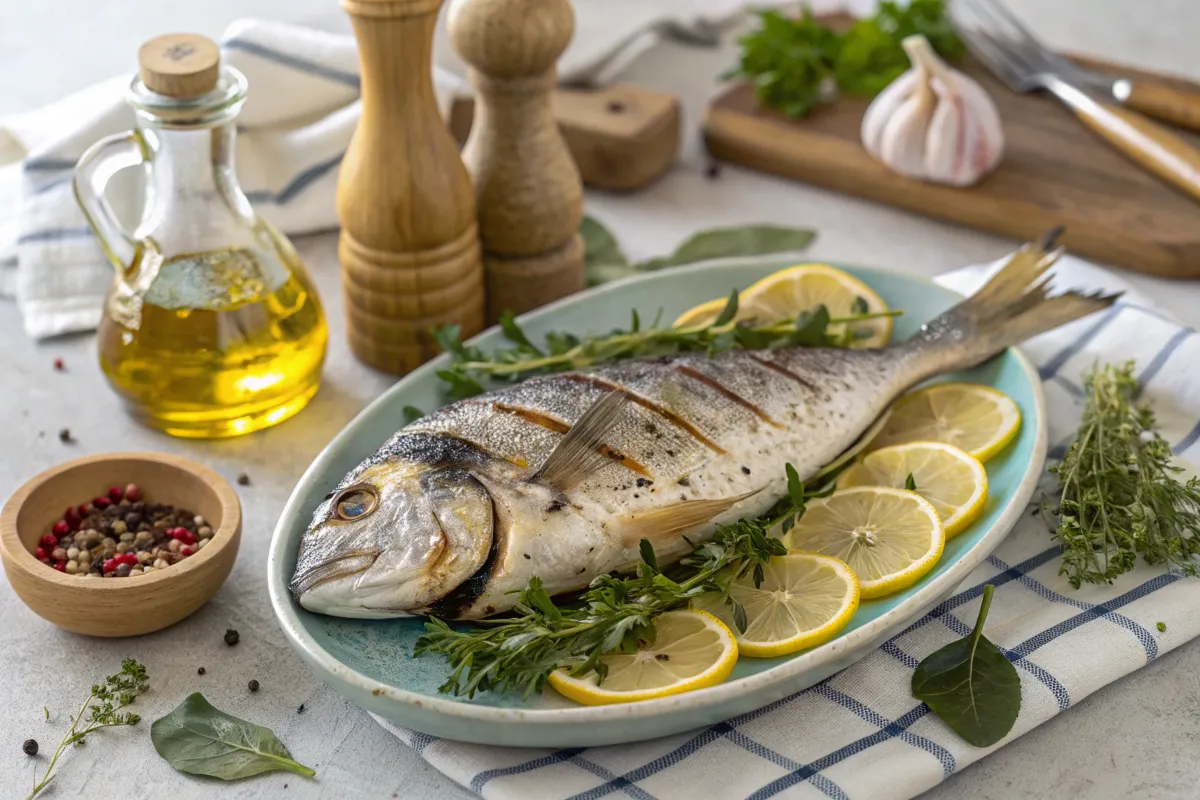When it comes to exploring seafood options, Dorado fish—also known as Mahi-Mahi or dolphinfish—is often the star of the show. Not only does this vibrant fish dazzle with its golden-green hues, but it also brings a delightful taste to the table. But are Dorado fish good to eat? This article dives deep into their nutritional profile, health benefits, cooking methods, and sustainability to answer all your questions. Let’s uncover why this fish deserves a spot on your plate!
Understanding Dorado Fish
What is Dorado Fish?
Dorado fish, scientifically known as Coryphaena hippurus, is a fast-swimming species commonly found in warm, tropical waters. It’s renowned for its delicate taste, firm texture, and versatility in the kitchen. Whether you call it Mahi-Mahi in Hawaii or dolphinfish elsewhere, this species has gained global recognition for being both a culinary delight and a sustainable seafood choice.
Common Names and Synonyms
This fish wears many hats when it comes to names. While commonly referred to as Dorado fish, it’s also known as Mahi-Mahi in Polynesian regions, a term that translates to “strong-strong” in Hawaiian. In Spanish-speaking areas, “Dorado,” meaning “golden,” is a nod to its shimmering scales. Interestingly, its nickname dolphinfish often causes confusion, as it’s not related to dolphins but rather named for its playful swimming patterns.
Physical Characteristics and Habitat
One look at a Dorado fish, and you’ll understand why it’s called the golden swimmer. Its brilliant green and gold scales glisten under sunlight, making it a striking sight in the water. Typically growing up to 40 pounds, this fish thrives in warm oceans like the Gulf of Mexico, the Caribbean Sea, and parts of the Pacific. Preferring open waters, Dorado fish are migratory, often chasing schools of smaller fish, squid, or shrimp for food.
Nutritional Profile of Dorado Fish
Nutritional Value of Dorado Fish
Dorado fish is not just a feast for the eyes and palate—it’s also a nutritional powerhouse. With its high protein content and low calorie count, it’s a go-to choice for health-conscious individuals. A typical 3-ounce serving of Mahi-Mahi contains around 93 calories, 20 grams of protein, and less than 1 gram of fat. These metrics make it an excellent option for those aiming to maintain a balanced diet.
Moreover, Dorado fish boasts minimal saturated fats and no carbohydrates, positioning it as a lean and nutrient-dense source of energy. It’s ideal for athletes, weight-watchers, or anyone looking to add quality proteins to their meals.
Macronutrient Composition
A breakdown of the macronutrients reveals why Dorado fish is such a hit:
- Proteins: The fish is packed with high-quality, lean protein that promotes muscle repair and growth. Unlike red meats, it offers this benefit without adding excessive fats or calories.
- Fats: While low in overall fat, Dorado fish contains heart-friendly unsaturated fats, particularly omega-3 fatty acids, which we’ll discuss in detail shortly.
- Carbohydrates: True to its nature as a lean protein source, it’s carb-free, making it a great fit for keto or low-carb diets.
Vitamins and Minerals Content
When you eat Dorado fish, you’re not just getting protein—you’re also benefiting from an array of essential vitamins and minerals:
- B Vitamins: Rich in vitamin B12 and niacin, Dorado fish helps support energy production, red blood cell formation, and brain health.
- Selenium: This powerful antioxidant mineral aids in protecting your body from free radical damage and strengthens your immune system.
- Potassium: Critical for muscle function and heart health, potassium levels in Mahi-Mahi help regulate blood pressure.
- Magnesium: Present in moderate amounts, magnesium supports bone health and enzyme functions.
Omega-3 Fatty Acids Presence
A standout feature of Dorado fish is its omega-3 fatty acid content. Though not as high as in oily fish like salmon, Mahi-Mahi still offers a decent dose of these heart-healthy fats. Omega-3s are known for their ability to:
- Reduce inflammation
- Improve heart health
- Support cognitive functions
Incorporating Dorado fish into your meals ensures you’re not missing out on these essential nutrients.
Health Benefits of Consuming Dorado Fish
Health Benefits of Eating Dorado Fish
From supporting your cardiovascular system to promoting overall well-being, eating Dorado fish comes with numerous perks. Its nutrient-rich profile and low-fat nature make it a health superstar.
Cardiovascular Health
Eating Dorado fish can be a boon for your heart. Thanks to its omega-3 fatty acids, this fish helps:
- Lower bad cholesterol (LDL) levels
- Improve blood flow
- Reduce risks of heart attacks or strokes
Moreover, its potassium content contributes to better blood pressure regulation, reducing strain on the cardiovascular system.
Anti-Inflammatory Properties
Chronic inflammation is linked to a host of diseases, but incorporating Dorado fish into your diet can help combat this. Omega-3s are well-documented for their anti-inflammatory effects, which may reduce risks associated with conditions like arthritis, diabetes, and autoimmune disorders.
Support for Nervous System
Finally, let’s not overlook Dorado fish’s role in brain health. Its vitamin B12 content is critical for neurological functions, while omega-3 fatty acids enhance cognitive performance and may reduce the risk of neurodegenerative diseases like Alzheimer’s.
Culinary Uses and Preparation Methods
Culinary Applications of Dorado Fish
When it comes to versatility in the kitchen, Dorado fish stands out as a true gem. With its firm, flaky texture and mildly sweet flavor, it adapts beautifully to a variety of cooking methods and cuisines. Whether you’re a seafood enthusiast or a beginner, there’s no shortage of ways to savor this delicacy. Beyond its taste, Mahi-Mahi is a healthy choice that suits various dietary preferences, making it a favorite on menus around the world.
Popular Cooking Methods
Cooking Dorado fish is a delight because its firm texture holds up well across different techniques:
- Grilling: Its dense flesh makes it perfect for grilling without falling apart, and a charred crust adds a smoky flavor.
- Baking: Baking with herbs, lemon, and olive oil preserves its moisture and enhances its natural taste.
- Sautéing or Pan-Seared: A quick pan-sear in butter or olive oil creates a golden, crispy exterior.
- Broiling: Broiling with spices and a citrus glaze creates a caramelized finish.
- Steaming or Poaching: For lighter preparations, steaming or poaching locks in nutrients and keeps it tender.
Traditional Dishes Featuring Dorado
Dorado fish has a prominent place in traditional recipes across cultures, reflecting its global popularity:
- Hawaiian Mahi-Mahi Tacos: Grilled Mahi-Mahi wrapped in tortillas, topped with mango salsa and creamy coleslaw.
- Caribbean Curry: Dorado fish cooked in a fragrant coconut milk curry, paired with rice and plantains.
- Mediterranean Lemon Herb Fillets: Pan-seared fillets infused with oregano, parsley, and a drizzle of lemon olive oil.
- Latin American Ceviche: Cubes of raw Dorado marinated in lime juice, chili, and cilantro, creating a refreshing, tangy appetizer.
- Asian Stir-Fry: Stir-fried Dorado fish with soy sauce, ginger, and vegetables for a savory and aromatic dish.
Pairing Dorado with Other Ingredients
Pairing ingredients with Dorado fish elevates its flavor profile:
- Citrus Fruits: Lemon, lime, or orange complements its natural sweetness.
- Fresh Herbs: Dill, basil, and cilantro add vibrant, earthy notes.
- Spices: Paprika, cumin, and black pepper create depth and warmth.
- Vegetables: Asparagus, zucchini, and bell peppers offer balance and crunch.
- Grains: Serve alongside quinoa, couscous, or wild rice for a satisfying meal.
With so many options, experimenting with Dorado fish opens the door to endless culinary possibilities.
Sustainability and Environmental Considerations
Sustainability of Dorado Fishing
The growing demand for seafood has raised concerns about overfishing and environmental impact. Thankfully, Dorado fish—thanks to its fast growth rate and widespread distribution—has emerged as one of the more sustainable seafood options. Proper fishing practices help ensure the species’ availability for future generations while maintaining ecological balance.
Fishing Practices and Regulations
Sustainability begins with ethical fishing techniques:
- Line-Caught Methods: Line fishing minimizes bycatch and is less disruptive to marine ecosystems.
- Seasonal Restrictions: Enforcing fishing seasons ensures the population can replenish during breeding periods.
- International Guidelines: Organizations like the Marine Stewardship Council certify sustainable fisheries to promote responsible practices.
Environmental Impact
Despite its sustainability, irresponsible practices can still pose threats:
- Bycatch Issues: Unsustainable methods risk capturing non-target species, harming biodiversity.
- Habitat Disruption: Overfishing and trawling may damage coral reefs or seagrass beds where Dorado fish thrive.
Educating consumers and encouraging regulations can mitigate these effects, ensuring that choosing Dorado supports healthy ecosystems.
Choosing Sustainable Sources
To make eco-friendly choices when purchasing Dorado fish, consider the following:
- Certification Labels: Look for labels like MSC (Marine Stewardship Council) or ASC (Aquaculture Stewardship Council) on packaging.
- Local Suppliers: Supporting small-scale fisheries reduces the carbon footprint associated with long-distance shipping.
- Ask Questions: Don’t hesitate to ask vendors about the fishing methods and origin of the fish
Frequently Asked Questions about Dorado Fish
Curious about Dorado fish? Here, we address some of the most common questions about this popular seafood choice, covering everything from its safety and taste to its environmental impact. Let’s dive into the details!
Is Dorado Fish Safe to Eat?
Yes, Dorado fish is safe to eat and widely enjoyed for its mild flavor and high nutritional value. Its firm texture and lean composition make it an excellent choice for various cooking methods. When purchasing, always ensure the fish is fresh or properly frozen and sourced from reputable suppliers to guarantee safety.
How Does Dorado Taste Compared to Other Fish?
The taste of Dorado fish is often described as mild, slightly sweet, and less “fishy” than some other seafood options. It’s comparable to halibut or cod but with a firmer texture. This mild flavor makes it incredibly versatile, as it pairs well with bold seasonings or simple marinades.
What Are the Best Cooking Methods for Dorado?
Grilling, baking, and pan-searing are among the best ways to prepare Dorado fish. Grilling enhances its natural flavors with a smoky touch, while baking allows you to infuse the fish with herbs and citrus. Pan-searing creates a golden crust while keeping the inside tender and moist.
Is Dorado a Sustainable Choice?
Yes, Dorado fish is generally considered a sustainable seafood option due to its rapid growth rate and widespread availability. However, sustainability depends on the fishing practices employed. Look for certifications like the Marine Stewardship Council (MSC) label when purchasing.
Are There Any Mercury Concerns with Dorado?
Dorado fish contains low to moderate levels of mercury compared to other species like swordfish or tuna. As with all seafood, it’s essential to consume in moderation, especially for pregnant women or young children, to minimize exposure to mercury.
How Often Can I Include Dorado in My Diet?
Experts recommend including Dorado fish in your diet 1-2 times a week as part of a balanced meal plan. Its low calorie and high protein content, combined with essential nutrients, make it a valuable addition to a healthy lifestyle. Just ensure it’s sourced sustainably to benefit both your health and the environment.
Conclusion
In the world of seafood, Dorado fish—or Mahi-Mahi—stands out as a stellar choice for its exceptional taste, versatility, and health benefits. Packed with high-quality protein, essential vitamins, and omega-3 fatty acids, it’s a nutrient-rich option that supports heart health, reduces inflammation, and promotes overall well-being. From grilling and baking to traditional dishes across cultures, its culinary potential is as vibrant as its golden-green scales.
Moreover, with responsible fishing practices and a focus on sustainability, enjoying Dorado fish can align with eco-conscious values, ensuring the preservation of marine ecosystems. By making informed choices about sourcing, you can indulge in this delectable seafood while supporting a healthier planet.
So, are Dorado fish good to eat? Absolutely. With its remarkable taste, nutritional benefits, and sustainability, it’s a fantastic addition to any menu. Whether you’re a seasoned chef or just discovering this treasure of the ocean, there’s no better time to savor the golden delight of Dorado fish.




